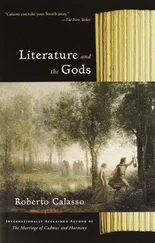The next morning we check out of the hotel feeling refreshed, say goodbye to the DeWeeses, and head north on the open road out of Bozeman. The DeWeeses wanted us to stay, but a peculiar itching to move west and get on with my thoughts has taken over. I want to talk today about a person whom Phædrus never heard of, but whose writings I’ve studied quite extensively in preparation for this Chautauqua. Unlike Phædrus, this man was an international celebrity at thirty-five, a living legend at fifty-eight, whom Bertrand Russell has described as “by general agreement, the most eminent scientific man of his generation.” He was an astronomer, a physicist, a mathematician and philosopher all in one. His name was Jules Henri Poincare.
It always seemed incredible to me, and still does, I guess, that Phædrus should have traveled along a line of thought that had never been traveled before. Someone, somewhere, must have thought of all this before, and Phædrus was such a poor scholar it would have been just like him to have duplicated the commonplaces of some famous system of philosophy he hadn’t taken the trouble to look into.
So I spent more than a year reading the very long and sometimes very tedious history of philosophy in a search for duplicate ideas. It was a fascinating way to read the history of philosophy, however, and a thing occurred of which I still don’t know quite what to make. Philosophical systems that are supposed to be greatly opposed to one another both seem to be saying something very close to what Phædrus thought, with minor variations. Time after time I thought I’d found whom he was duplicating, but each time, because of what appeared to be some slight differences, he took a greatly different direction. Hegel, for example, whom I referred to earlier, rejected Hindu systems of philosophy as no philosophy at all. Phædrus seemed to assimilate them, or be assimilated by them. There was no feeling of contradiction.
Eventually I came to Poincare. Here again there was little duplication but another kind of phenomenon. Phædrus follows a long and tortuous path into the highest abstractions, seems about to come down and then stops. Poincare starts with the most basic scientific verities, works up to the same abstractions and then stops. Both trails stop right at each other’s end! There is perfect continuity between them. When you live in the shadow of insanity, the appearance of another mind that thinks and talks as yours does is something close to a blessed event. Like Robinson Crusoe’s discovery of footprints on the sand.
Poincare lived from 1854 to 1912, a professor at the University of Paris. His beard and pince-nez were reminiscent of Henri Toulouse-Lautrec, who lived in Paris at the same time and was only ten years younger.
During Poincare’s lifetime, an alarmingly deep crisis in the foundations of the exact sciences had begun. For years scientific truth had been beyond the possibility of a doubt; the logic of science was infallible, and if the scientists were sometimes mistaken, this was assumed to be only from their mistaking its rules. The great questions had all been answered. The mission of science was now simply to refine these answers to greater and greater accuracy. True, there were still unexplained phenomena such as radioactivity, transmission of light through the “ether”, and the peculiar relationship of magnetic to electric forces; but these, if past trends were any indication, had eventually to fall. It was hardly guessed by anyone that within a few decades there would be no more absolute space, absolute time, absolute substance or even absolute magnitude; that classical physics, the scientific rock of ages, would become “approximate”; that the soberest and most respected of astronomers would be telling mankind that if it looked long enough through a telescope powerful enough, what it would see was the back of its own head!
The basis of the foundation-shattering Theory of Relativity was as yet understood only by very few, of whom Poincare, as the most eminent mathematician of his time, was one.
In his Foundations of Science Poincare explained that the antecedents of the crisis in the foundations of science were very old. It had long been sought in vain, he said, to demonstrate the axiom known as Euclid’s fifth postulate and this search was the start of the crisis. Euclid’s postulate of parallels, which states that through a given point there’s not more than one parallel line to a given straight line, we usually learn in tenth-grade geometry. It is one of the basic building blocks out of which the entire mathematics of geometry is constructed.
All the other axioms seemed so obvious as to be unquestionable, but this one did not. Yet you couldn’t get rid of it without destroying huge portions of the mathematics, and no one seemed able to reduce it to anything more elementary. What vast effort had been wasted in that chimeric hope was truly unimaginable, Poincare said.
Finally, in the first quarter of the nineteenth century, and almost at the same time, a Hungarian and a Russian… Bolyai and Lobachevski… established irrefutably that a proof of Euclid’s fifth postulate is impossible. They did this by reasoning that if there were any way to reduce Euclid’s postulate to other, surer axioms, another effect would also be noticeable: a reversal of Euclid’s postulate would create logical contradictions in the geometry. So they reversed Euclid’s postulate.
Lobachevski assumes at the start that through a given point can be drawn two parallels to a given straight. And he retains besides all Euclid’s other axioms. From these hypotheses he deduces a series of theorems among which it’s impossible to find any contradiction, and he constructs a geometry whose faultless logic is inferior in nothing to that of the Euclidian geometry.
Thus by his failure to find any contradictions he proves that the fifth postulate is irreducible to simpler axioms.
It wasn’t the proof that was alarming. It was its rational byproduct that soon overshadowed it and almost everything else in the field of mathematics. Mathematics, the cornerstone of scientific certainty, was suddenly uncertain.
We now had two contradictory visions of unshakable scientific truth, true for all men of all ages, regardless of their individual preferences.
This was the basis of the profound crisis that shattered the scientific complacency of the Gilded Age. How do we know which one of these geometries is right? If there is no basis for distinguishing between them, then you have a total mathematics which admits logical contradictions. But a mathematics that admits internal logical contradictions is no mathematics at all. The ultimate effect of the non-Euclidian geometries becomes nothing more than a magician’s mumbo jumbo in which belief is sustained purely by faith!
And of course once that door was opened one could hardly expect the number of contradictory systems of unshakable scientific truth to be limited to two. A German named Riemann appeared with another unshakable system of geometry which throws overboard not only Euclid’s postulate, but also the first axiom, which states that only one straight line can pass through two points. Again there is no internal contradiction, only an inconsistency with both Lobachevskian and Euclidian geometries.
According to the Theory of Relativity, Riemann geometry best describes the world we live in.
At Three Forks the road cuts into a narrow canyon of whitish-tan rock, past some Lewis and Clark caves. East of Butte we go up a long hard grade, cross the Continental Divide, then go down into a valley. Later we pass the great stack of the Anaconda smelter, turn into the town of Anaconda and find a good restaurant with steak and coffee. We go up a long grade that leads to a lake surrounded by pine forests and past some fishermen who push a small boat into the water. Then the road winds down again through the pine forest, and I see by the angle of the sun that the morning is almost ended.
Читать дальше












